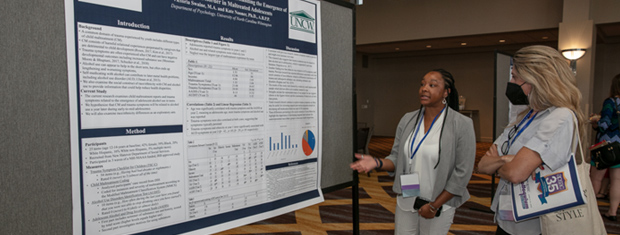




The APSAC Advisor is a peer reviewed quarterly news journal for professionals in the field of child abuse and neglect.
The APSAC Advisor provides succinct, data-based, practice-oriented articles that keep interdisciplinary professionals
informed of the latest developments in policy and practice the field of child maltreatment. It is designed to highlight
best practices in the field and publish original articles and current information about child maltreatment for professionals
from a variety of backgrounds including medicine, law, law enforcement, social work, child protective services, psychology,
public health and prevention in the U.S.
 If you wish to learn more about submitting an article to the Advisor, please click here.
If you wish to learn more about submitting an article to the Advisor, please click here.
This library contains Advisor issues dating back to the first issue in 1988. The most recent issue appears at the top.
Scroll down to select past issues by year and issue number. Once a publication appears in the box, you
can use the Enlarge button to open the document in a new window or tab (depending on how your browser is set up).
This will allow you to view the document with larger print.
To print a document, first use the Enlarge button to open the document in a new window or tab. Then use your browser's Print command.
To return here from a new tab, close the tab. To return from a new window, click your browser's Back button.
In the listing below, click on a year and issue number to see the articles in that publication.
1990 Number 4
Vicarious Traumatization: The Emotional Costs of Working With Survivors
Psychotherapy with survivors of child sexual and physical abuse presents a special set of challenges to therapists. Just as trauma strongly affects victims, working with victims and survivors alters therapists' ways of understanding the world and their beliefs about themselves and others, and can create distressing imagery. How can therapists understand and resolve these effects in order to remain open and helpful to their clients?
Assessing Organizational Culture in the Social Services: Burn-Out Prevention
Public sector managers have been slow to acknowledge and act on the well-established fact that organizational culture largely determines employee morale. The common view of social service employees as endless platoons of soldiers sent into the trenches of the child protection system exacerbates already high turnover rates.
Because concerted investigation has established that children are generally reliable witnesses and rarely lie about abuse experiences, attention has largely shifted away from the children's capabilities and motivations and onto the interviewer's capabilities and motivations.
We, too, want to protect the child and empower him or her. We can finally appreciate what social workers have been telling us for years. But we are trained to win. If we listen too much, will we lose the edge in court, the drive, the motivation to do what we must to obtain the conviction?
The stresses of working on behalf of abused children and their families have been outlined elsewhere in this edition of The Advisor. The purpose of this article is to provide guidelines for dealing with hostile media coverage of our work, After a long day responding to the effects of abuse, none of us needs to come home to a newspaper or magazine article angrily alleging that we've manufactured the whole problem.
Things You Should Know About Surviving in the Field But Were too Burned Out to Ask
In its early stages, burnout can be difficult to self-diagnose, because when you work in the field of child protection you're never sure if what you are experiencing is symptomatic or the way you're supposed to feel.
The purpose of Journal Highlights is to alert readers to current literature on child abuse. Selected articles from journals representing the variety of disciplines reflected in APSAC s membership are presented in the form of an annotated bibliography.